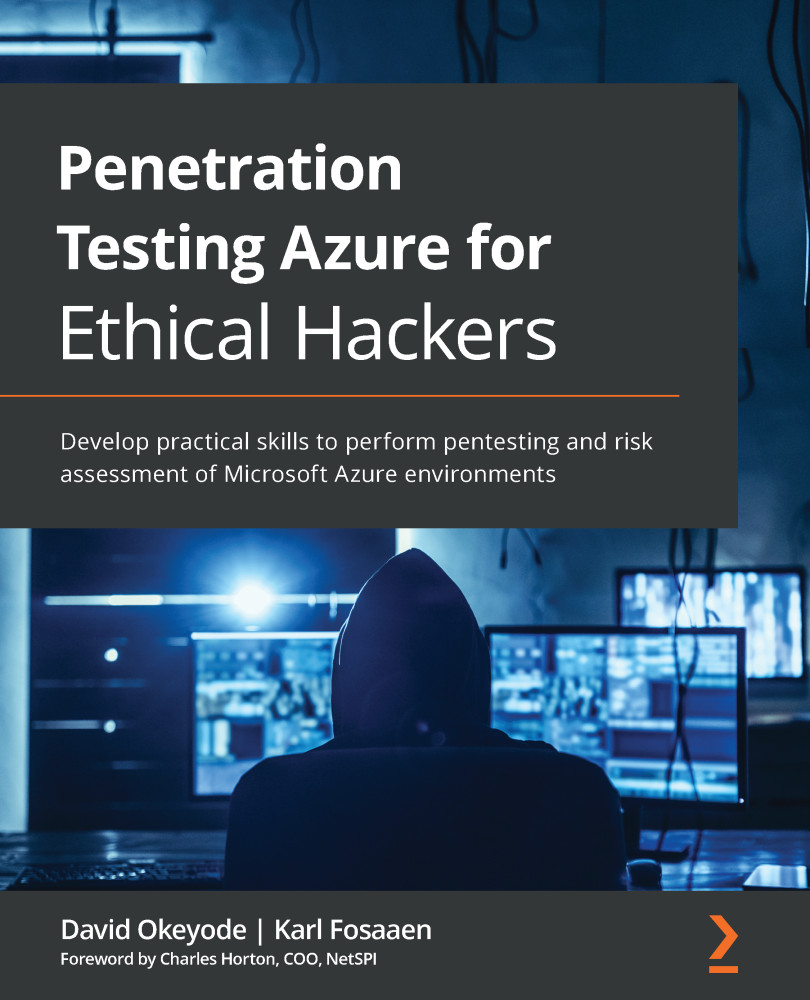-
Book Overview & Buying

-
Table Of Contents

Penetration Testing Azure for Ethical Hackers
By :

Penetration Testing Azure for Ethical Hackers
By:
Overview of this book
“If you’re looking for this book, you need it.” — 5* Amazon Review
Curious about how safe Azure really is? Put your knowledge to work with this practical guide to penetration testing.
This book offers a no-faff, hands-on approach to exploring Azure penetration testing methodologies, which will get up and running in no time with the help of real-world examples, scripts, and ready-to-use source code.
As you learn about the Microsoft Azure platform and understand how hackers can attack resources hosted in the Azure cloud, you'll find out how to protect your environment by identifying vulnerabilities, along with extending your pentesting tools and capabilities.
First, you’ll be taken through the prerequisites for pentesting Azure and shown how to set up a pentesting lab. You'll then simulate attacks on Azure assets such as web applications and virtual machines from anonymous and authenticated perspectives.
In the later chapters, you'll learn about the opportunities for privilege escalation in Azure tenants and ways in which an attacker can create persistent access to an environment.
By the end of this book, you'll be able to leverage your ethical hacking skills to identify and implement different tools and techniques to perform successful penetration tests on your own Azure infrastructure.
Table of Contents (12 chapters)
Preface
Section 1: Understanding the Azure Platform and Architecture
 Free Chapter
Free Chapter
Chapter 1: Azure Platform and Architecture Overview
Chapter 2: Building Your Own Environment
Chapter 3: Finding Azure Services and Vulnerabilities
Section 2: Authenticated Access to Azure
Chapter 4: Exploiting Reader Permissions
Chapter 5: Exploiting Contributor Permissions on IaaS Services
Chapter 6: Exploiting Contributor Permissions on PaaS Services
Chapter 7: Exploiting Owner and Privileged Azure AD Role Permissions
Chapter 8: Persisting in Azure Environments
Other Books You May Enjoy
